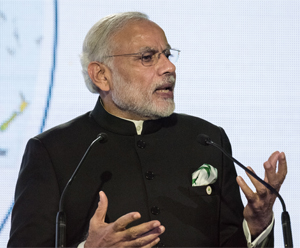
Australian exporters remain upbeat amid U.S.-China trade war

It has been 17 months since the bitter, tit-for-tat trade war between China and the United States put a huge damper on the global economy, and Australia is feeling the chill.
After all, China is Australia’s largest trading partner, accounting for about one-third of its exports, while the U.S. is Australia’s most important ally.
China’s move to devalue its yuan in August to soften the blow of U.S. tariffs has weakened the Australian dollar, making Australian exports to China more expensive. Combined with a potential trade deal that favors American exports over Australian ones, the odds look stacked against Australia.
In spite of worries about uncertainty in a slower economy, exporters Down Under are proving to be a resilient lot.
The latest DHL Export Barometer report, a yearly review of exporters’ confidence, showed that 69 percent of local businesses remain optimistic about their business prospects in 2020, not far from last year’s record 75 percent.
This marks the fifth consecutive year since the 2008 Global Financial Crisis where confidence is tracking higher than the long-term average, shared Gary Edstein, CEO and Senior Vice President for DHL Express Oceania.
Not only are exporters expecting rising sales, but many are also taking strategic steps to grow their business through alternative channels such as e-commerce, while focusing on selected markets.
This trend highlighted in the report is an encouraging sign, especially with exporters already facing a rapidly changing e-commerce marketplace and developing political situations in both the U.S. and the UK that are reportedly impacting the way exporters do business.
Staying buoyant amid headwinds
Across the various sectors, consumer goods businesses were the most optimistic, with 75 percent expressing confidence in business growth, followed by agricultural businesses at 71 percent, going by the DHL report.
It surveyed 920 Australian exporters this year, ranging from small businesses with less than five employees to large organizations with over 100 staff.
Rising activity and investment in the mining sector lifted confidence to 65 percent from just 50 percent in 2018.
Much of the buoyant sentiment likely came from an uptick in sales, with about 56 percent of exporters reporting higher sales over the last 12 months. In fact, a boom in iron ore and liquefied natural gas exports and stronger gold prices last year has given Australia’s economy a short-term fillip in volatile times, contributing to record revenues in recent years.
It also helped that Australia’s trade with its traditional partners has remained stable. New Zealand remains Australia’s top exporting destination, soaking up more than two-thirds of its exports this year.
Broadly, it was the small office/home office-sized and small businesses that saw positive sentiment skyrocket, while larger and more experienced exporters posted lower levels of assurance, in line with previous years’ reports.
Online retail continued to be a bright spot for exporters across the board, with e-commerce generating orders or enquires for 77 percent of them this year, almost on par with the 79 percent from last year.
The lucrative digital market is expected to drive global spending up to nearly US$3.46 trillion (€3.1 trillion) in 2019, up from US$2.93 trillion last year, and Australian exporters are seizing the chance to attract more overseas customers.
The DHL Export Barometer revealed that over the last year, 36 percent of exporters worked to improve their website design while one in five introduced promotions and discounts to stay competitive.
Reducing risk
While the general mood is upbeat, Australian exporters remain cautious given the headwinds fomented by the U.S.-China trade war.
Some 45 percent of the exporters polled said they are worried about the impact of the ongoing conflict, more than last year’s 21 percent.
At the same time, uncertainty surrounding Brexit has slowed numbers in the United Kingdom, where exports had previously experienced steady growth until 2016.
As a result, exporters plan to be more selective about export destinations next year, targeting an average of two markets per business instead of three previously. Many will also double down on exports to their top destinations: New Zealand and North America.
“For businesses new to exporting, we typically see a trend where they concentrate their expansion in markets with familiar consumer buying preferences, cultures and languages,” said economist Tim Harcourt, JW Nevile Fellow in Economics, University of New South Wales Business School.
“For Australian export businesses, these markets are likely to be other Western nations, such as New Zealand, the U.S. or Canada.”
Many are also determined to move ahead with their export growth plans, adopting new sales and marketing strategies. More than half the exporters surveyed in the DHL report, for instance, are utilizing social media to reach out to new customers abroad.
Meanwhile, Australia continues to be a firm proponent of free and open trade — perhaps the best way to protect itself from economic fluctuations.
It has committed to signing the Regional Comprehensive Economic Partnership, a major trade deal that includes the 10 ASEAN nations, Australia, New Zealand, Japan, South Korea and China, even as India’s resistance to join has put a dent on the pact.
As Australian Prime Minister Scott Morrison put it at the East Asia Summit in Thailand held early November: “The integration of the economy of the Indo Pacific is incredibly important (not only) for the prosperity of the region, but also its security.”
MORE FROM THIS COLLECTION















 English
English